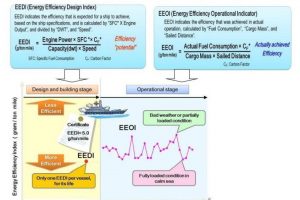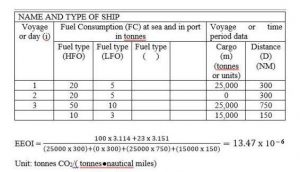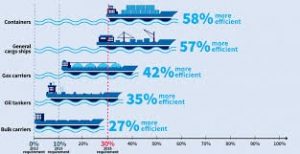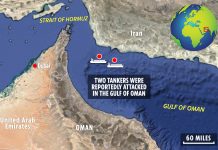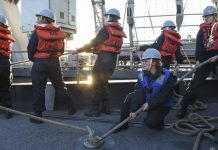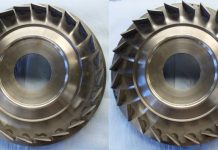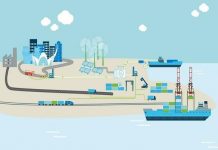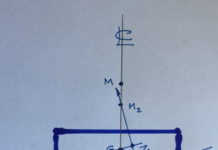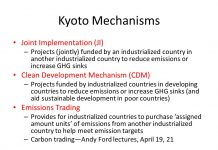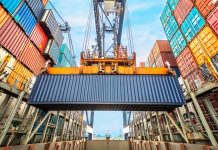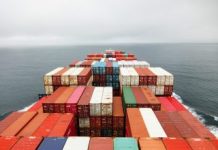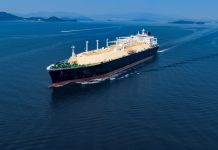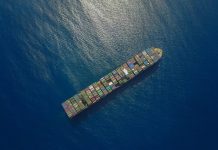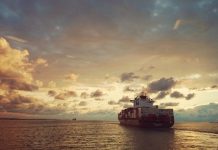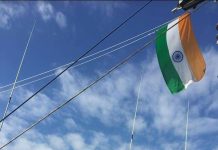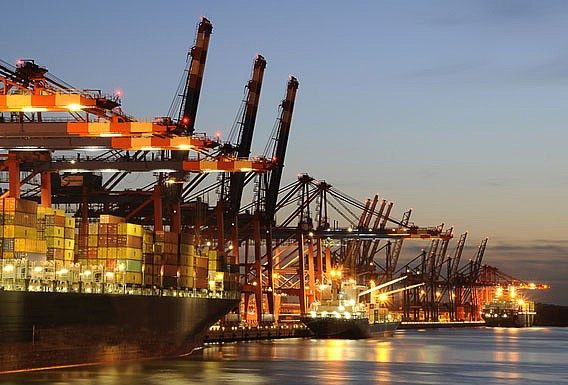
Almost 90% of world trade is carried by approximately 90000 ships through sea routes. Just like other modes of transportation which uses fossil fuels, ships also produce carbon dioxide which causes the climatic changes like global warming and acidification. Shipping industry causes significant change in climate change problem.
Shipping is the back bone of many countries and their revenue generating area so it has to be operated in more efficient manner. In order to improve the efficiency of ship we have to look after many factors which are as follows:-
- DESIGN ( EEDI)
- PLAN AND OPERATE (SEEMP)
- MONITOR (EEOI)
DESIGN (EEDI)
Under the concept of EEDI the ship must be fitted with equipment’s which contributes less pollution. The EEDI is essentially a measure of efficiency of ship in transportation the focus of which is maximum cargo transportation with minimum fuel consumption. The ships are designed with latest developments in such a way that all the equipment’s which are fitted into ship will have minimum fuel consumption so the emission will also be less. EEDI is a tool to measure energy efficiency of the ship at design stage of vessel.
The formula for EEDI:

PLAN AND OPERATE (SEEMP) 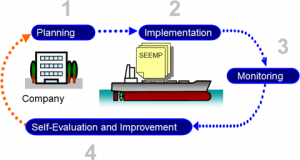
Ship Energy Efficiency Management Plan is a ship specific plan that provides the guidelines to improve the efficiency of that ship so that operating cost of the vessel should reduce as well as it should be environment friendly.
MEPC 213(63) provides the guidelines for the developments of ship energy efficiency management plan. SEEMP can only achieve its goal when both ship staff along with ship owner work together to improve the efficiency of ship.
PLANNING
Planning is important factor in improving the efficiency and it require effort from ships staffs like speed optimization , weather routing, hull maintenance and effective operation of equipment’s and also support from ship owner for communicating with charter for on time operation and avoidance of delay for berthing or lay-up time.
IMPLEMENTATION
The efforts of planning for energy improvement will be wasted if it’s not implemented effectively. A plan will be developed for the Implementation of planning methods which will also include record keeping and a person will be designated for implementation.
MONITORING
Monitoring is the only way to assess whether the measures for energy improvement are working effectively or not. Some ship owner may have existing system to monitor the energy efficiency of ship. According to SEEMP guidelines EEOI is the internationally accepted tool to monitor the energy efficiency of the ship.
SELF EVALUATION AND IMPROVEMENT
It is the final stage of the cycle and on the basis of it each process is assessed and this method not only identifies how effective each energy improvement measure is but also determine how planning, implementation and monitoring can be improved for better results and also determine the scope of improvement in each stage of SEEMP.
ENERGY EFFICIENCY OPERATIONAL INDICATOR (EEOI)
EEOI is the monitoring tool suggested by IMO to monitor the efficiency of ship. The ship owner can use other monitoring tool also according to their wish. EEOI is the amount of CO2 emitted by the ship per ton mile of work.
CALCULATION OF EEOI
The objective of the Appendix is to provide guidance on calculation of the Energy Efficiency Operational Indicator (EEOI) based on data from the operation of the ship.
DATA SOURCES
Primary data sources selected could be the ship’s log-book (bridge log-book, engine log-book, deck log-book and other official records).
Fuel Mass to CO2 mass conversion factors (CF)
CF is a non-dimensional conversion factor between fuel consumption measured in g and CO2 emission also measured in g based on carbon content. The value of CF is as follows:
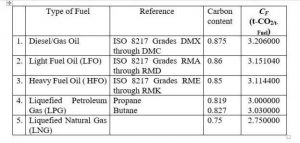
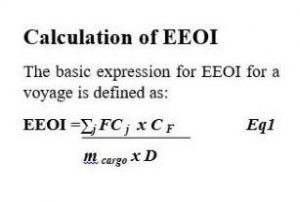
Where average of the indicator for a period or for a number of voyages is obtained, the Indicator is calculated as:
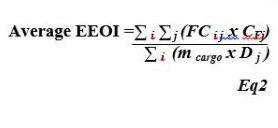
Where:
-
- j is the fuel type;
- i is the voyage number
- FC i j is the mass of consumed fuel j at voyage i ;
- CF j is the fuel mass to CO2 mass conversion factor for fuel j ;
- m cargo is cargo carried (tonnes) or work done (number of TEU or passengers) or gross tonnes for passenger ships; and
- D is the distance in nautical miles corresponding to the cargo carried or work done.
The unit of EEOI depends on the measurement of cargo carried or work done, e.g., tonnes CO2/(tonnes●nautical miles), tonnes CO2/(person●nautical miles), etc. It should be noted that equation 2 does not give a simple average of EEOI among number of voyage i.
Example:
A simple example including one ballast voyage, for illustration purpose only, is provided below. The example illustrates the application of the formula based on the data reporting sheet.